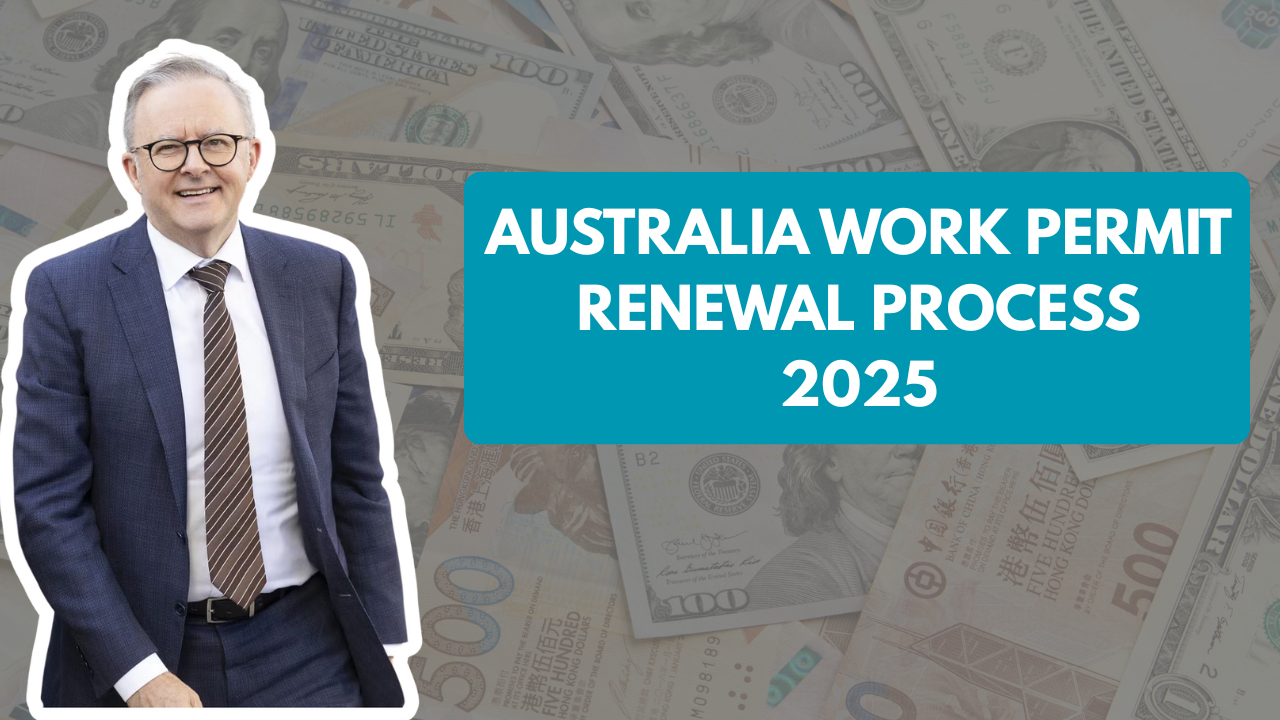Australia remains one of the world’s most attractive destinations for skilled and semi-skilled workers. From healthcare professionals to construction laborers, the country offers diverse employment opportunities for foreign nationals. To work legally in Australia, non-citizens must obtain a work visa or work permit. This guide explains the Australia Work Permit Process 2025, covering eligibility, application steps, fees, timelines, and employer obligations.
Table of Contents
Overview of Australia Work Permit
| Category | Details |
|---|---|
| Permit Name | Australia Work Visa (Temporary or Permanent) |
| Administered By | Department of Home Affairs (DHA), Australia |
| Types of Permits | Temporary Skill Shortage Visa (subclass 482), Skilled Work Regional Visa (subclass 491), Employer Nomination Scheme (subclass 186), Working Holiday Visa, etc. |
| Validity | 2–5 years (depends on visa type) |
| Renewable | Yes (some visas lead to permanent residency) |
| Processing Time | 1–9 months (depending on visa type) |
Purpose of the Work Permit
The Australian Work Permit system aims to:
- Attract skilled professionals to address workforce shortages.
- Support economic growth through foreign talent.
- Offer pathways to permanent residency for long-term skilled workers.
- Regulate entry of foreign workers and protect local employment opportunities.
Eligibility Criteria
- For Employers
- Must be an approved sponsor under the Department of Home Affairs.
- Must show genuine labor shortages that cannot be filled locally.
- Provide labor market testing proof in many cases.
- For Workers
- Must possess the required skills, qualifications, and work experience.
- Meet English language proficiency standards (IELTS/TOEFL/PTE).
- Must undergo a health examination and obtain police clearance.
- Be within the eligible age range (varies by visa, e.g., under 45 years for most skilled visas).
Application Process: Step-by-Step
- Determine the Right Visa Type
- Skilled workers, temporary migrants, seasonal laborers, and working holiday applicants must apply for the visa category that matches their purpose.
- Employer Sponsorship (If Required)
- For visas like Subclass 482 (TSS Visa), the employer must nominate the worker for a role.
- Prepare and Submit Application
- Apply online via the Department of Home Affairs portal (ImmiAccount).
- Upload supporting documents (passport, skills assessment, English test scores, employer nomination, health insurance).
- Pay application fee.
- Biometrics and Health Checks
- Applicants may be asked to provide biometrics and complete a medical exam.
- Application Review & Decision
- DHA reviews documents and issues visa approval or refusal.
- If approved, the applicant receives a visa grant letter electronically.
Estimated Costs
| Visa Type | Government Fee (Approx.) |
|---|---|
| Temporary Skill Shortage Visa (482) | AUD 1,455 – 2,645 |
| Skilled Work Regional (491) | AUD 4,640 |
| Employer Nomination Scheme (186) | AUD 4,640 |
| Working Holiday Visa (417/462) | AUD 635 |
(Additional costs: English test fees, health checks, police certificates, and biometrics.)
Processing Timeline
| Stage | Duration |
|---|---|
| Employer Nomination (if applicable) | 1–3 months |
| Visa Application Submission | 1–9 months (varies by visa type) |
| Medical & Security Clearance | 2–6 weeks |
| Final Decision | Up to 9 months |
How the Work Permit is Processed
- Applications are made online via ImmiAccount.
- The Department of Home Affairs evaluates eligibility, employer nomination, and documentation.
- Some skilled visas are processed faster if the occupation is on the Priority Migration Skilled Occupation List (PMSOL).
Why It Matters
The Australia Work Permit system:
- Bridges skill gaps in critical sectors such as healthcare, engineering, IT, and trades.
- Provides a legal pathway for workers to contribute to Australia’s economy.
- Offers long-term migrants an opportunity to transition to permanent residency.
- Maintains strict compliance to protect the local job market.
Final Takeaway
The Australia Work Permit process in 2025 is structured, competitive, and highly regulated. Applicants must choose the right visa type, meet skill and language requirements, and follow all health and security procedures. Employers play a crucial role in sponsorship-based visas, while skilled workers can also explore independent migration options.
FAQs
1. Can a temporary work visa in Australia lead to permanent residency?
Yes, many visas such as subclass 186 or 491 provide pathways to permanent residency.
2. Is IELTS mandatory for Australia work visas?
Yes, most work visas require proof of English proficiency through IELTS, TOEFL, or PTE.
3. What happens if my visa application is refused?
You may appeal through the Administrative Appeals Tribunal (AAT) or reapply with corrected documentation.
Official Website: Department of Home Affairs, Australia – www.homeaffairs.gov.au

